I started my undergraduate studies in economics in the late 1970s after starting out as…
Australians have plenty of reasons to be ashamed – ODA is one of them
The Australian Federal Department of Foreign Affairs and Trade (DFAT), which oversees the Overseas Development Assistance (ODA) our nation extends to those less fortunate nations released new data last week in the wake of the Mid-Year Economic and Fiscal Outlook that the Treasurer launched on December 18, 2016. The data allows us to ascertain the shifts in ODA that will occur as the federal government continues its obsessive pursuit of a fiscal surplus. The austerity is not only killing growth in Australia (recall that September-quarter real GDP growth was negative) and increasing the national poverty rate but is also revealing how mean we are as a nation. As one of the wealthiest nations in the world (currently we are ranked 2nd behind Switzerland for per capita wealth), we are now cutting into the resources we extend to poorer nations in our region as part of a mindless quest for surplus. The problem is not only the economic idiocy that underpins these cuts. The other, perhaps larger problem, of which the first is a symptom is that, as a nation, Australia is losing its moral compass. In this neo-liberal era, we have become an increasingly ugly nation – lacking in generosity to each other and to outsiders. We engage in criminal behaviour (indefinitely detaining refugees in prisons on remote islands; engaging in illegal invasions of foreign nations, etc) and punish poverty rather than do everything we can to reduce it and provide the equal opportunities to all that we so often congratulate ourselves as being champions of. We are a mean-spirited nation these days and an international pariah. There is no pride in holding an Australian passport. It is easy to live here if you have money. The climate is good, the beaches great, plenty of open terrain, great sport – but our national spirit is disappearing.
For background, please see my blog – Australia’s generosity to other nations is collapsing
While the national narrative is full of ‘budget repair’ nonsense, the majority of the population is oblivious to how national policy is being hijacked by lies.
What needs to be attended to in the Australian economy at present is the high labour underutilisation rate (mass unemployment and undemployment) and the rising poverty rate.
The fiscal balance is a reflection of the extensive labour underutilisation and the declining real GDP growth rate in the sense that the flat employment growth and rising joblessness has undermined the tax base of the Federal government.
It is also a cause in the sense that if there is mass unemployment (that is, unemployment beyond the small amount associated with full employment – people moving between jobs etc) then Modern Monetary Theory (MMT) tells us that the fiscal deficit is too low.
The first observation (reflection) is about the behaviour of the automatic stabilisers, while the second (cause) is about the discretionary policy choices made by government. Both impact on the fiscal balance.
But a rising deficit is not something that should be the target of policy. A deficit of 10 per cent of GDP might be appropriate under some conditions (relating to private spending and the external balance) just as a 2 per cent deficit might be appropriate under different conditions. At times, a fiscal surplus might be appropriate.
There is nothing linear and directional about it – up is not always good nor bad just as down is not always good or bad.
The terminology “budget repair” assumes the fiscal balance is like a car that has broken down and needs to be fixed.
It further constructs a fiscal deficit as being a dysfunction and the larger the deficit the worse the repair job becomes.
The construction is invalid at the most elemental level.
While the US and its allies such as Australia think that democratising nations is about invading them militarily, blasting the hell out of all and sundry, and then propping up corrupt government which then act as conduits to siphon off the nation’s wealth and income flows to the elites, whoever they might be, it is clear that this strategy breeds contempt and spawns dangerous radical movements like ISIS to form.
Australia has had the audacity to divert some of its ODA allocation, into cash that it has been pouring into PNG and Nauru to maintain the prisons that house the refugees we refuse to deal with humanely.
Further cuts to aid where it supports the activities in poorer nations that we generally think are important for ‘states’ to undertake – public education and health, governance, etc – will only exacerbate these global instabilities.
Australia, now, has an appalling record in terms of ODA. And as it embraces the mindless fiscal austerity the record is set to get worse.
The latest data from the DFAT reinforces that assessment.
Historical context of ODA
In 1970, the 25th Session of the General Assembly of the United Nations passed a – Resolution on Financial resources for development – (Paragraph 43) that said:
In recognition of the special importance of the role that can be fulfilled only by official development assistance, a major part of financial resource transfers to the developing countries should be provided in the form of official development assistance. Each economically advanced country will progressively increase its official development assistance to the developing countries and will exert its best efforts to reach a minimum net amount of 0.7 percent of its gross national product at market prices by the middle of the decade.
The UN agreed that while “developing countries must, and do, bear the main responsibility for financing their development” it was still beholden on each “economically advanced country” to provide substantial resources by way of overseas development aid to assist nations that were less well-off.
Most recently, the – Report of the International Conference on Financing for Development – which emerged out of the Monterrey, Mexico meetings of the United Nations (March 18-22, 2002) said that (Paragraph 42) in the context that “a substantial increase in ODA and other resources will be required if developing countries are to achieve the internationally agreed development goals and objective” and:
In that context, we urge developed countries that have not done so to make concrete efforts towards the target of 0.7 per cent of gross national product (GNP) as ODA to developing countries …
The meeting also noted “that ODA will still fall far short of both the estimates of the flows required to ensure that the millennium development goals are met and the target of 0.7 per cent of gross national product”.
You will also find the resolution re-affirmed at the – World Summit on Sustainable Development – which was held in Johannesburg, August 26-September 4, 2002.
This link allows you to learn about the history of the – The 0.7% ODA/GNI target.
The ODA/GNI ratio tells us how much the government of any country is allocating to ODA relative to the size of the economy (the nation’s total income).
There is a debate as to whether this ratio measures the generosity of a nation given that it doesn’t provide any measure of aid quality nor what happens to the aid once it is dispersed.
The latter point is very important given the extent of the corruption in many nations receiving the ODA and the discussion above relative to global insecurity.
It is also important in assessing the quality of what ODA Australia provides given the point above about using ODA funds to maintain offshore detention centres (prisons).
Latest OECD Development Report
The most recent data from the OECD Development Assistance Committee (DAC) update (April 13, 2016) – Press Release – said that:
Adjusting for inflation and the appreciation of the US dollar1, this represents an increase of 6.9% in real terms, the highest level ever achieved for net ODA. Net ODA as a share of gross national income (GNI) was 0.30%, on a par with 2014 …
Most of the increase in 2015 was due to higher expenditures for in-donor refugee costs as a result of the surge of asylum seekers.
Net ODA rose in twenty two countries, with the largest increases recorded in Austria, Canada, Czech Republic, Germany, Greece, Iceland, Italy, Japan, Netherlands, Poland, Slovak Republic, Slovenia and Sweden … By contrast, total net ODA fell in six countries, with the largest decreases recorded in Australia and Portugal.
Portugal is in crisis and being prosperity there is being decimated by the ridiculous austerity rules that the European Commission is forcing on them.
Australia has no such excuse. It is just a disgrace.
The OECD reported that Australia cut it development aid budget by 11.1 per cent in real terms in 2015.
The following graph shows the real percentage growth in ODA in 2015 for the OECD nations.
Further, while the majority of nations did increase ODA in 2015 (to cope with the refugee crisis), the OECD also notes that:
Only six of the 28 DAC countries – Denmark, Luxembourg, The Netherlands, Norway, Sweden and the United Kingdom – met a United Nations target to keep ODA at or above 0.7% of GNI.
So there is still an on-going and massive shortfall in ODA/GNI ratios relative to the agreed target of 0.7 per cent.
The OECD estimates that in 2015 the ratio for all nations “would be 0.30%”.
The following graph shows the state of its Member Nations in 2015 relative to the 0.7% target.
According to the Credit Suisse Research Institute’s Global Wealth Report 2016:
Switzerland retains first place, and its lead over second-placed Australia (USD 376,000, down USD 5,000) appears very secure … The United States (USD 345,000, up USD 3,000), and Norway are still in third and fourth place respectively.
Australia is thus not a poor nation. But moreover, its government issues its own currency.
The next graph shows the movements in the ODA/GNI ratios between 2000 (red triangles) and 2015 (blue columns) for the OECD nations.
The red dotted lines represents the 0.7 per cent target.
Australia has made no progress over the 15 years towards closing the gap. In other words, its promises as an international citizen are hollow.
Australia likes to claim it “punches above it weight” when it is winning some sporting event but when it comes to something important (and I love sport) like feeding starving children we largely ignore our international responsibilities and commitments.
Australia’s decline in support for poorer nations
The following graph shows the OECD ODA/GNI ratio from 1960 to 2015. In the 1960s, when Australia enjoyed true full employment (less than 2 per cent with zero underemployment), Australia was among the most generous providers of ODA to the poorer nations.
Our international aid assistance was very close to the 0.7 per cent of GNI range that was subsequently agreed to be the acceptable target for advanced nations.
The decline began in earnest in the early 1980s which coincided with the emerging dominance of neo-liberal macroeconomic thinking which attempted to construct the aid in terms of excessive spending and a denial of other prioritised spending.
This argument has especially been used during recessions where governments of both political hues have claimed that nations who are in recession no longer have the means to extend their generosity to the poorer nations.
The whole construction is, of course, deeply flawed.
A nation in recession that issues its own currency has no more or no less financial capacity available to provide ODA than a nation that is growing strongly.
In fact, it is in the interests of a nation in recession to not only introduce counter-cyclical domestic fiscal policy initiatives but also to increase ODA because the poorer countries tend to import from the more advanced. The more income that is produced in the poorer nations the more likely it will be that the exports of the advanced nation will hold up or increase.
So this false idea that a recession reduces capacity is endemic and damaging innocent people everywhere. A nation mired in recession has more real resources available than ever and is living well below its means rather than the way the fiscal austerity proponents like to say (living beyond their means).
And it will get worse – latest DFAT data
The latest DFAT data mentioned at the outset allows us to look forward as to the intentions of the Australian government in terms of its ODA allocations.
The news is not good.
We learn that (Source):
Australia’s spending on foreign aid is at an eight-year low …
Commitments over the four-year forward estimates period will peak at $4.1 billion, meaning Australia will spend less on foreign aid in 2020 than it did in 2010-11, when the budget reached $4.3 billion …
The 2016 federal budget saw a further $224 million in cuts from foreign aid, following the Abbott government’s slashing of $1 billion in 2015 – the largest ever single year reduction.
Now that should make all Australian proud! But then we are to blame. We elected a sequence of governments that have delivered these abominable outcomes.
In the latest – Australian Aid Budget Summary 2016-17 – we learn that total 2016-17 ODA allocations for DFAT will be $3,827.8 million down from $4,051.7 million the year before.
The latest DFAT estimates came from the Senate Estimates Committee where the Department delivered written – Responses to Questions on Notic – on December 15, 2016.
These responses relate to hearings held in October 2016.
The updated forward estimates allow us to track the intended real ODA expenditure by the Federal Government out to 2019-20. I have assumed that the GDP deflator increases by 2 per cent a year from 2016-17 to 2019-20.
The following graph shows the percentage changes in real ODA outlays from 2013-14 out to 2019-20. The actual data becomes forward projections after 2015-16.
The slight rise in 2014-15 was due to the slower than expected inflation as a result of declining energy prices.
The Abbott conservative government slashed real ODA expenditure dramatically (one of the largest annual cuts in the history of the program), and the latest incarnation of this government under Malcolm Turnbull has continued the real cuts.
By 2017-18, the planned ODA only increases with expected inflation so the real growth is around zero.
The projected cuts by the conservatives will see ODA outlays decline by more than 30 per cent under current assumptions.
That is a dramatic shift in our behaviour towards the rest of the world.
And when you consider that the Australian government has been counting spending on prisons in the Pacific to incarcerate refugee seekers as part of the ODA and this segment has been growing significantly in recent years, you get a good picture on why decent Australian people should be hanging their heads in shame.
If we project out likely growth in GNI, we would find that by 2017-18 the ODA/GNI ratio would be at its lowest point ever – 0.22 per cent.
As a nation we are racing to the bottom of the OECD rankings and in violation of our international obligations.
We are also part of the advanced nation denial about terrorism and its link to poverty and poor education.
Conclusion
The neo-liberal paradigm rules the World at present and humanity generally is the victim, particularly those most disadvantaged in material terms.
The cuts announced by the Australia federal government to our Overseas Aid Program over the current fiscal year will continue the large cuts from last financial year (which were among the largest shift in provision of aid in our history).
The projected cuts are now starting to manifest in concrete terms as aid agencies start to cancel programs and lay off staff. Once again the myths of neo-liberal macroeconomics leads us to accept governments doing appalling things in our name.
The Australian government should be increasing the fiscal deficit right now to ensure that domestic spending is sufficient to push unemployment down.
But it also should be increasing its ODA to ensure we meet our international obligations if achieving a ODA/GNI ratio of 0.7 per cent as soon as possible. After all we promised to achieve the latter goal in 1970!
Further, 22 of our nearest neighbours are considered to be developing nations. Why would we want to undercut the prospects of our nearest neighbours?
Even self-interest tells us that it is foolish to leave our trading partners poor.
This is my last written blog for 2016 – with the Weekend Quiz to come on Saturday (December 31). So 2016 has been a pretty awful year – at the macroeconomic level – and it doesn’t appear that 2017 will offer much respite.
At least we will have the Trump circus to keep us amused (not!).
Best wishes to all.
Band Advertisement
If any of my readers are in Melbourne (Australia) this week and want to see my band – Pressure Drop – play its last gig for 2016 – then come along to Open Studio, in 204 High Street, Northcote (an inner suburb).
We always aim to ferment revolution but while encouraging dancing and having fun.
We are playing 2 sets from 20:00.
Last chance for 2016. It would be good to see some of you at the gig.
That is enough for today!
(c) Copyright 2016 William Mitchell. All Rights Reserved.
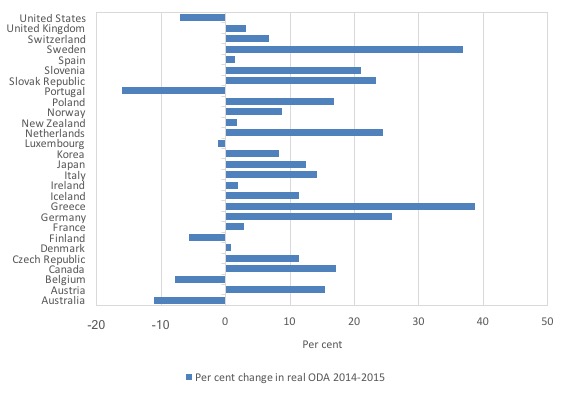
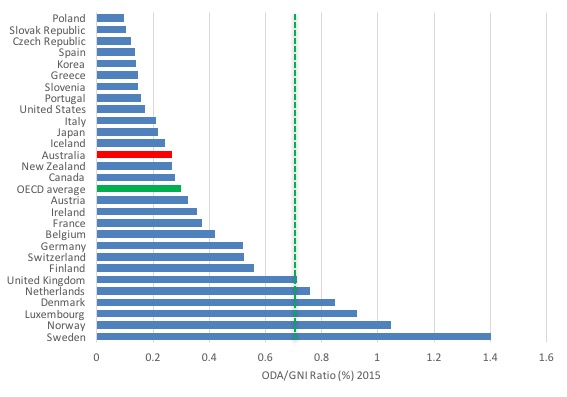
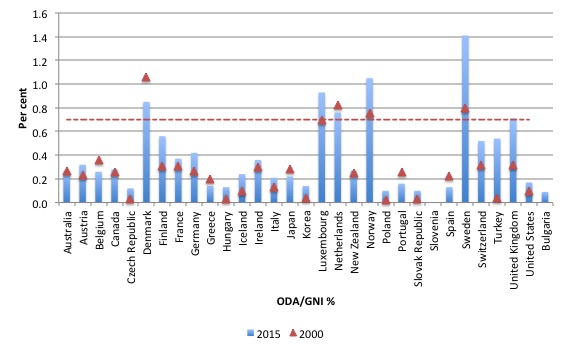
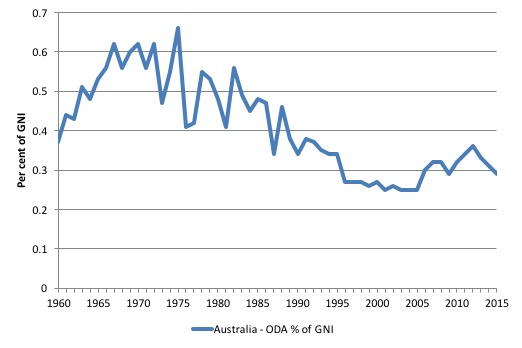
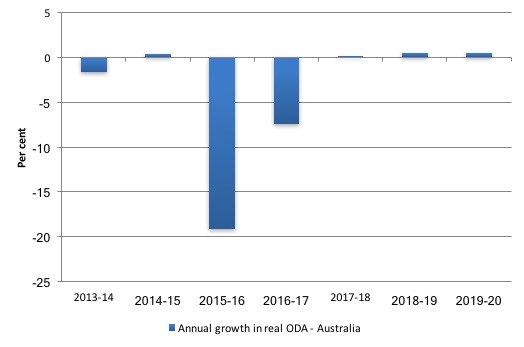
Thank you so much for your blog Bill. My understanding of macroeconomics is much stronger due in the main to the readable information you provide throughout the year.
Thank you and compliments of the season.
Same here Bill,
Many thanks for your commitment to a continuous dialogue. An output unmatched and extraordinary.
Having found your site, after reading Neil Wilson, my understanding of economics has be transformed.
Now I am trying to find the best way to describe the benefits of MMT insight to others, who are unwilling to change their accepted view, not because they are unintelligent but because they “can’t be bothered” or “it’s all too difficult”.
Good article above, could you extend this to explaining the real macroeconomic effect and movement of the Aid money.
Also I need a better argument to counter the difference that others see between new spending by Gov., which they can grasp and money for ongoing public work like health, education, welfare etc, that they are only able to accept as being directly payed for by taxes.
Thank you and compliments of the season.
Have a Good New Year and a productive 2017
I’d also like to thank Bill for his amazing and unstinting work – it’s a ray of light in a crazy world! I’ve been following the blogs for a few years now and they have really helped to open my mind to new ways of seeing our monetary system and nudged me out of lazy non-thinking. As a non-economist I still find it all hard work but necessary.
Ucumist-there’s a great article by Stephanie Kelton on why taxes don’t ‘pay’ for things despite the accounting system (from Gold Standard days) making it look as if it does. Once everything is seen from a Banking reserve point of view it becomes easier to see how it works. I had to read the article numerous times but it made sense in the end! Stephanie’s paper can be founf here: http://www.levyinstitute.org/pubs/wp244.pdf
Dear Bill,
Thank you so much for what you write here. I discovered MMT and your blog this later this year after years of Georgism and it has changed my outlook completely.
God bless you and Warren Mosler and the other MMTers.
Thanks
Alan
I’ve read the Global wealth report,and I see that it takes a nations’ mean household financial wealth to measure its ranking.
Currency issuing capabilities aside, I don’t see why having a high property values and other financial assets
would enable a county to provide more assistance.(I realise that this was just to demonstrate that Australia is largely wealthy and should contribute).I suppose high foreign exchange rate enables a country like Austrailia to give it’s aid recipients more purchasing power.
Britains’ Tory party does an excellent job handing out international aid to god knows who, foreign dicatorships and to countries it is feebly attempting to curry good favour so as to prompt weapons purchasing,it even gives a small amount to India which has its own space program and more billionaires than the UK.
Meanwhile the high street has young homeless people who are refused any assistance from social services, like basic housing support.
I think help should start at home, and in regards to low income nations-we should simply wipe out onerous and in many cases odious international debt.
Of course we should all do both really,I just find it odd that Cameron used to pat himself on the back (and get cheered on by the comfortable middle classes) for being such a good global citizen and hitting the 0.7% target whilst social insecurity and improvishment and absolute poverty (homelessness) increased domestically
Dear Bill, thank you very much for taking the time to write a detailed, informative blog post every day on top of your academic workload and other commitments. I esteem your knowledge and dedication highly. I would like the economics profession to be more pluralistic, and to include far more people who base their research on an accurate understanding of the financial capacities of currency-issuing governments. It annoys me that of all the social sciences, economics is by far the most influential on government policy and the public’s understanding of our policy options, yet the profession lacks rigour and has been damaging societal wellbeing for forty years.
Along with all the others, my thanks too Bill. Thanks for the economics and the loan of your moral compass.
we just have to wait for the economic comet to strike bill,
which it will ,
then mmt ers will will rule the world, and all this appalling de humanising will end